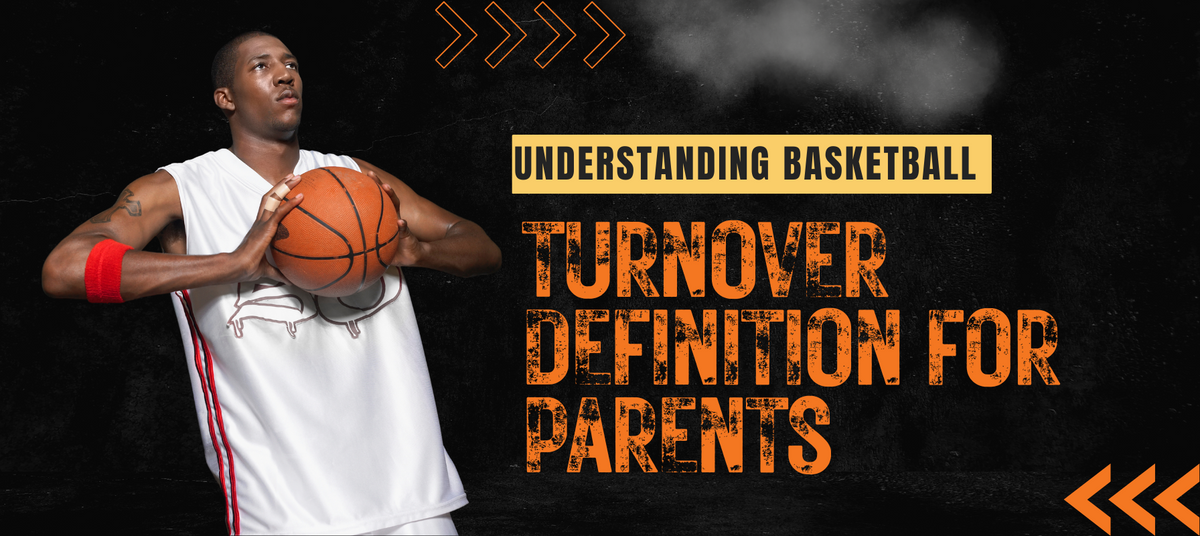
Understanding Basketball Turnover Definition for Parents
|
|
Tiempo de lectura 5 min
|
|
Tiempo de lectura 5 min
A deep understanding of the game of basketball means going beyond just the basics of dribbling, shooting, and passing. This includes grasping the nuances that often dictate the flow and outcome of a match. At the heart of these critical elements lies the basketball turnover definition: the often-frustrating, yet utterly crucial, aspect of the game where possession changes hands before a team gets a chance at a shot. Let’s break it down and see why understanding this definition is vital for any aspiring basketball player or coach.
A basketball turnover definition encompasses any action or inaction by the offensive team that leads to them losing possession of the ball without attempting a shot. This can happen in a number of ways, ranging from a stolen pass by an opponent to stepping out of bounds with the ball. Other ways include violations like traveling or double dribbling.
But understanding the basketball turnover definition isn’t just about memorizing a list of rules; it’s about grasping their impact on the game. Think of it like this: every possession in basketball is golden, a precious opportunity to put points on the board.
A turnover, then, is like giving that golden opportunity away. This is particularly important when you consider that giving the other team extra opportunities while limiting your own chances to score is never a good strategy for success. This can be a main problem for teams losing close games.
Basketball turnovers fall under two main categories: violations and player errors.
Violations occur when a player breaks a specific rule, instantly handing possession to the opposing team. Here’s a rundown of some common violations that every player should be aware of:
Then we have those unfortunate player errors. Unlike violations that stem from rule breaches, these result from mistakes made on the court - think of them as those 'oh no' moments we've all experienced during a game. These errors can sometimes be due to defensive pressure. Player errors often show up in a team's practice plan.
Bad passes, intercepted passes, errant bounce passes – these miscues disrupt the offensive rhythm and hand the ball right back to the opponent, killing your scoring chances and momentum. These passing drills can really hurt your team. Turnovers occur often due to errant passes.
Losing control while dribbling, getting the ball poked away by a defender, stepping out of bounds – all common blunders that exemplify the fine line between ball control and disaster on the court. Players with great dribbling skills are less likely to have a discontinued dribble.
Beyond passing and dribbling, there's a host of other ways players can make a mess of things and end up with a turnover, including:
| Mistake | Description |
|---|---|
| Traveling on a rebound | You finally grab that rebound. But wait, take too many steps before releasing the ball and it’s a travel, negating all that hard work. |
| Offensive Goaltending | Timing is everything in basketball, and interfering with a shot as it's on its downward trajectory above the cylinder is a big no-no, resulting in a turnover (unless you're on the defensive end.). The NBA Video Rulebook shows examples of this. |
| Stepping Out of Bounds on a Catch and Shoot | Receiving the ball with your toes kissing the line might seem like a small thing - but this often overlooked error quickly turns a potential bucket into an automatic turnover. |
These mistakes can be considered a live ball turnover, or a turnover that happens while the ball is in play. A turnover dead ball turnover happens when the whistle is blown while a player has the ball. A dead ball turnover can also be called due to other violations while the player is in possession of the ball, but the ref blows the whistle after the violation occurs.
In the pressure cooker of a basketball game, even seasoned pros make mistakes that lead to turnovers. However, understanding the nuances of what constitutes a basketball turnover definition is an important step toward limiting them. It involves more than just memorizing the rule book; it demands developing on-court awareness, honing skills, and appreciating how each lost possession is a lost scoring opportunity for your team.
Reducing those 'oh no' moments and making each possession count comes with focused practice and a deeper understanding of how to minimize preventable mistakes – and that, my friend, often makes the difference between a win and a frustrating defeat. When a team loses possession of the ball, it gives the other team a chance to score. Defensive teams are always looking for ways to force the other team into making a mistake or committing a violation. A team loses when they have more turnovers than the other team, especially when their opponent's defensive pressure causes a lot of those turnovers. Basketball coaches preach about taking care of the ball on offense and forcing turnovers on defense.
Basketball Turnover. Basketball Turnover. Basketball Turnover.Basketball Turnover. Basketball Turnover. Basketball Turnover.Basketball Turnover.Basketball Turnover. Basketball Turnover.Basketball Turnover.Basketball Turnover. Basketball Turnover.Basketball Turnover.Basketball Turnover. Basketball Turnover.Basketball Turnover.Basketball Turnover. Basketball Turnover.Basketball Turnover.Basketball Turnover. Basketball Turnover.Basketball Turnover.Basketball Turnover.
Este sitio requiere cookies para proporcionar todas sus funciones.
